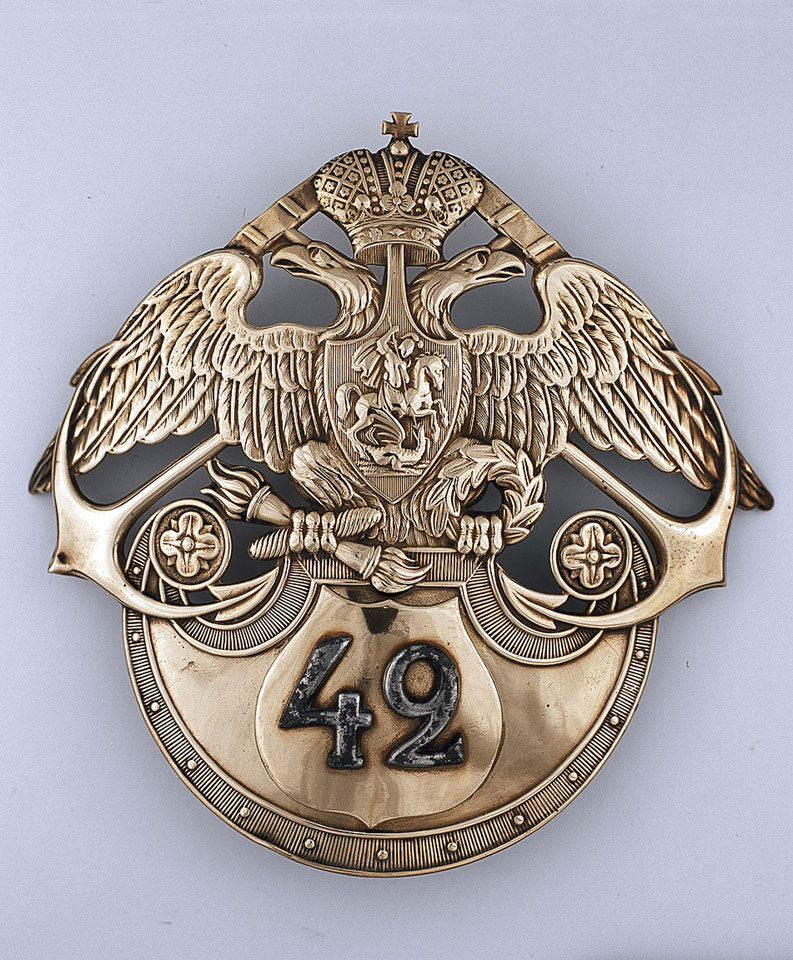
Online Collection
Helmet Plate, Russian Navy, 1855 (c)
This helmet plate is of the 42nd Russian Naval Detachment. It is in the form of a pair of anchors situated behind a double headed eagle, which identifies this helmet plate as belonging to a naval detachment.
The twin headed eagle with a shield on the eagles' chest depicting Saint George slaying the dragon can also be found on the Russian Coat of Arms. These two emblematic images are major symbolic elements of the Russian state. The double-headed eagle was originally used in Byzantine heraldry to represent the dual sovereignty (secular and religious) and dominance of the Roman Emperor over both the East and West. It was later adopted by the Russian tsars to position themselves as successors to the Byzantine state and to symbolise their power over Europe and Asia. The image of Saint George slaying the dragon dates back to the Byzantine period after the first Russian ruler used Saint George as his patron saint.
NAM Accession Number
NAM. 1963-10-335-1
Copyright/Ownership
National Army Museum Copyright
Location
National Army Museum, Study Collection
Object URL
https://collection.nam.ac.uk/detail.php?acc=1963-10-335-1

